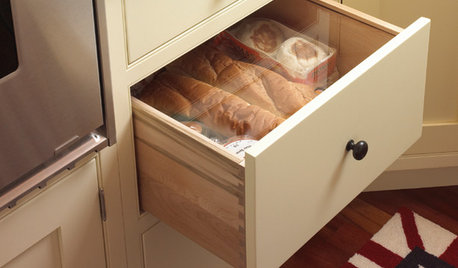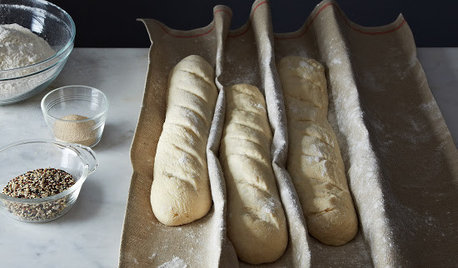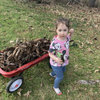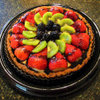Whole grain artisan bread
lpinkmountain
10 years ago
Related Stories

KITCHEN DESIGNKitchen Ideas for Bread Lovers
Any way you slice it, a kitchen designed with bread in mind conveys warmth and homeyness
Full Story
PRODUCT PICKSGuest Picks: Be Your Own Artisanal Chef
You may never settle for prepared foods again with these cooking tools, gadgets and storage pieces
Full Story
MATERIALSFabric Focus: Decorate With Grain Sacks for Quick Farmhouse Style
Vintage and reproduction grain sack material creates thick, durable upholstery for sofas, chairs, pillows and more
Full Story
KITCHEN DESIGN8 Stunning Stain Colors for Kitchen Cabinets
Transform raw wood for custom-looking cabinetry with a stain that fills your need for color but lets the grain show through
Full Story
ECLECTIC HOMESHouzz Tour: Hand Crafting Rehabs a Michigan Farmhouse
Artisan-made and vintage furnishings, a coffered ceiling and agrarian touches give a century-old home warm appeal
Full Story
CONTEMPORARY HOMESHouzz Tour: Rustic Modern Luxury in the Sonoma Wine Country
Beautiful textures, materials and artisan pieces highlight this dreamy neutral-hued home
Full Story
KITCHEN DESIGNNew This Week: 2 Kitchens That Show How to Mix Materials
See how these kitchens combine textures, colors and materials into a harmonious whole
Full Story
KITCHEN DESIGNA Designer Shares Her Kitchen-Remodel Wish List
As part of a whole-house renovation, she’s making her dream list of kitchen amenities. What are your must-have features?
Full Story
LIFESimple Pleasures: The Joy of Baking
Fill your house with a heavenly scent and your heart with cheer by making time to bake
Full Story
FARMHOUSESWorld of Design: See How 9 Families Live and Farm on Their Land
Join us as we visit the homes and farms of passionate food producers and hear about rural life around the globe
Full Story





cloudy_christine
lpinkmountainOriginal Author
Related Discussions
Artisan bread in 5 minutes a day book
Q
whole grain bread flour?
Q
Soft whole wheat/miulti grain bread...can you make this?
Q
'Artisan Bread in Five Minutes a Day' question
Q
cloudy_christine
shambo
grainlady_ks
lpinkmountainOriginal Author
lpinkmountainOriginal Author
grainlady_ks
lpinkmountainOriginal Author
grainlady_ks
lpinkmountainOriginal Author
shambo
arkansas girl
grainlady_ks
lpinkmountainOriginal Author
annie1992
lpinkmountainOriginal Author